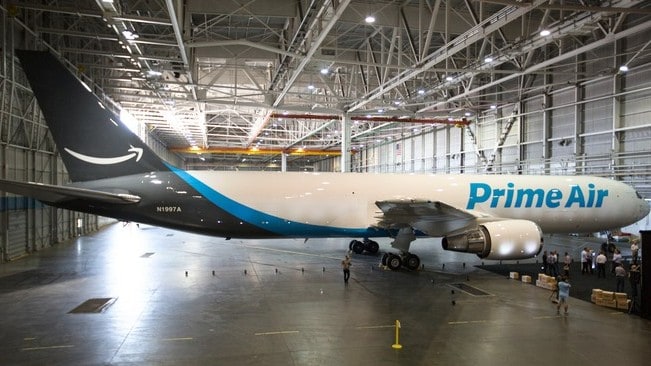This article was originally published on Fool.com. All figures quoted in US dollars unless otherwise stated.
Amazon (NASDAQ: AMZN) stock tumbled Friday after the company missed revenue estimates and surprised the market by calling for much slower revenue growth in the third quarter. Management expects the top line to increase just 10%-16% in the third quarter, a clear sign that the pandemic bump has ended and that the tech giant will now face difficult comparisons over the next few quarters. While that was the main takeaway from the report, there are some other key pieces of information that investors should be aware of.Demand is still outstripping capacity
Amazon has made a huge investment over the last year to expand its capacity by adding fulfillment centers and ramping up hiring. After the last four quarters, the company has spent a whopping $52 billion in capital expenditures, which may be a record for any business, and has added 460,000 new employees. However, that still doesn't seem to be enough, as the company is hustling to add more capacity in the second half of the year even as its year-over-year growth rate has slowed. In response to a question about per-unit fulfillment costs on the earnings call, CFO Brian Olsavsky said, "It usually takes a multiyear period to tame those assets. And we've literally nearly doubled our network here in the last 18 months from a size standpoint." Prime membership surged during the pandemic, which will boost long-term demand, but it also strains Amazon's logistics network further as the order minimum for free shipping on non-Prime orders no longer applies for those customers. Olsavsky acknowledged on the earnings call that the company's one-day delivery percentage had dropped and had not yet returned to pre-pandemic levels. High demand is a good problem to have for Amazon, but it also means that the investment cycle it began last year still has a long way to go.Amazon is feeling the labor shortage
In addition to capacity constraints, Amazon is also getting squeezed by the labor shortage. Olsavsky commented:The other thing is wage pressure has become evident. We've talked about this a bit. The wage increase for -- that we normally would do in October, we pulled forward into May. We're spending a lot of money on signing and incentives. And while we have very good staffing levels, it's not without a cost. It's a very competitive labor market out there. And certainly, the biggest contributor to inflationary pressures that we're seeing in the business.The company expects that pressure to continue as it ramps up hiring in the second half of the year toward the holiday season. Higher wages and a tight labor market could squeeze profits as Olsavsky's comment about inflationary pressure indicates. For the third quarter, Amazon guided for operating income to be down from a year ago, at $2.5 billion-$6 billion, down from $6.2 billion in Q3 2020. Separately, a New York Times investigation in June reported that the company's turnover rate is so high, with the average warehouse worker staying just eight months, that some execs worry it will run out of potential hires. That challenge may explain Jeff Bezos' promise to do better by his employees in his final shareholder letter as CEO.
The international biz is out of the red
For a long time, Amazon was burning cash in its international e-commerce segment as the company built out infrastructure around the world. It seemed reasonable to question whether the company would ever make a profit outside of North America, especially as it had taken a long time for North American e-commerce to become a cash generator. However, that no longer seems like a concern. Amazon just completed its fifth straight quarter of profitability in the international segment, bringing in $362 million in operating income on $30.7 billion in sales. For the first half of the year, it's already made $1.6 billion outside of North America. Older markets like the U.K. and Germany have long been profitable, and the company seems to be reaching a critical mass of Prime members across its international territories, which are more profitable for the company at scale. Olsavsky explained that two years' worth of international growth had been brought forward on the same base of assets, driving profitability. The company continues to invest, recently making Portugal the 22nd country with Prime, and is focused on building out its network in the developing world, including Brazil, India, and the Middle East. While international operating income is likely to remain volatile, the doubts about Amazon's ability to turn a profit have been put to rest.This article was originally published on Fool.com. All figures quoted in US dollars unless otherwise stated.








